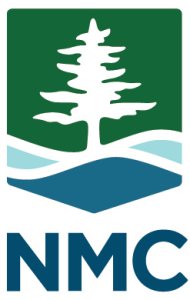 That may sound over-dramatic when referring to the first few seconds when our students arrive, but research says differently. According to Malcolm Gladwell’s Blink: The Power of Thinking Without Thinking (2005). “ …this ability we have as humans, to quickly make judgment calls, saves lives, provides interpersonal insight, recognizes fake artifacts, allows us to assess situations and take action quickly and can even predict the future of a relationship.” As we meet our students for the first class, we (and they) are making snap judgments about whether or not the class is going to be a good one. Here are some ideas to promote success for all.
That may sound over-dramatic when referring to the first few seconds when our students arrive, but research says differently. According to Malcolm Gladwell’s Blink: The Power of Thinking Without Thinking (2005). “ …this ability we have as humans, to quickly make judgment calls, saves lives, provides interpersonal insight, recognizes fake artifacts, allows us to assess situations and take action quickly and can even predict the future of a relationship.” As we meet our students for the first class, we (and they) are making snap judgments about whether or not the class is going to be a good one. Here are some ideas to promote success for all.
Greet students at the door. This gives you and them a chance to look each other in the eye and exchange greetings in a more personal way. Standing inside the class often means a few outgoing students will speak to you while others go by unnoticed. The online equivalent is the welcome message you share when students first view your course.
Have a tangible on the desks to use. This eliminates awkward moments while people arrive and can be an informational icebreaker. Perhaps it is an object and notecards, with a prompt asking them to write five ways the object relates to the class (and of course, their name and contact info). Postcards and cartoons also make good starters, or put practitioner books or magazines along with a prompt such as choosing the most interesting title or image. Online courses can do similar things in introductory forums.
Post relevant information on getting course materials. Numerous reasons can prevent students from being able to purchase course materials and texts ahead of time. A copy of your texts can be put on reserve in the library to help students. Also, many texts are in eBook form or have the first chapter available online as a preview. Some older editions are still in the library and might help the students until they are able to access their own book. Let students know you are there to help.
Connect students with each other. Life happens to all of us, and making sure your students have the contact information for a few other students in the class is important. Whether it is a transportation, work or family emergency, forgotten directions, or Murphy’s Law, having connections in the class as a support network is important for success.
Want to know more?
-
Establishing Rapport: Personal Interaction and Learning, Idea Paper #39
-
101 things to do in first three weeks of class, University of Nebraska
-
Boice, Robert (2000). Advice for New Faculty Members. Boston: Allyn and Bacon. (Osterlin Library owns a copy)
-
Davis, Barbara Gross (2009, 1993). Tools for Teaching. San Francisco: Jossey-Bass. (Osterlin Library owns a copy)


It would be nice to know if other online instructors have any good ways for students to connect with each other.
Great thought to share, Carol. One strategy I’ve seen online instructors use that works well is to ask a provocative question using a question & answer forum. Once they post their answer, they are usually eager to read what others said and engage in discussion. Another strategy is using the glossary tool (It acts like an RSS feed from your class) for students to submit their own current events, cool finds, or introductions. Students can comment on each other’s work or give each other ratings as well.
I hope others comment as well with other successful strategies!